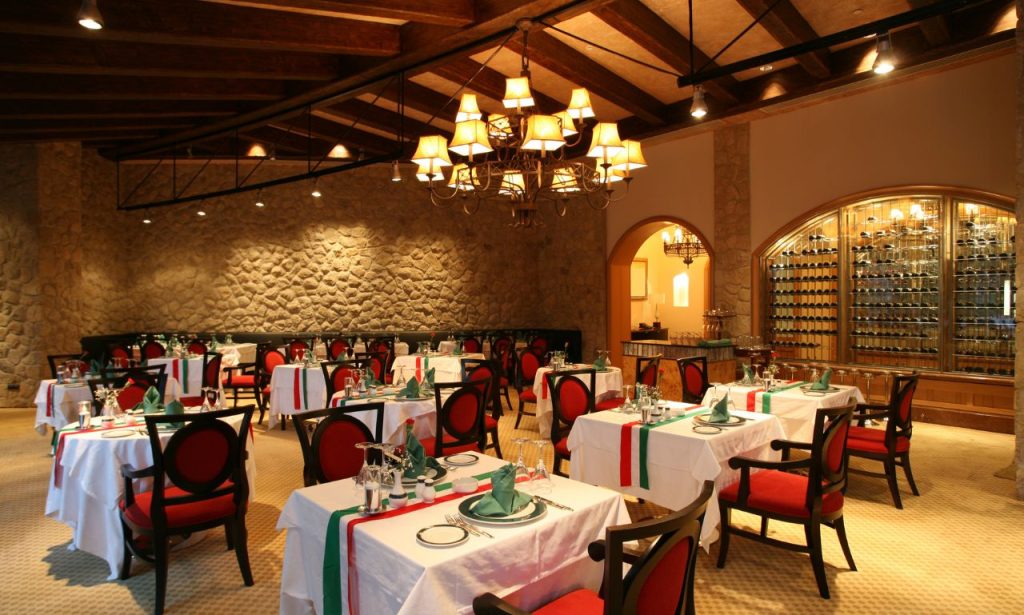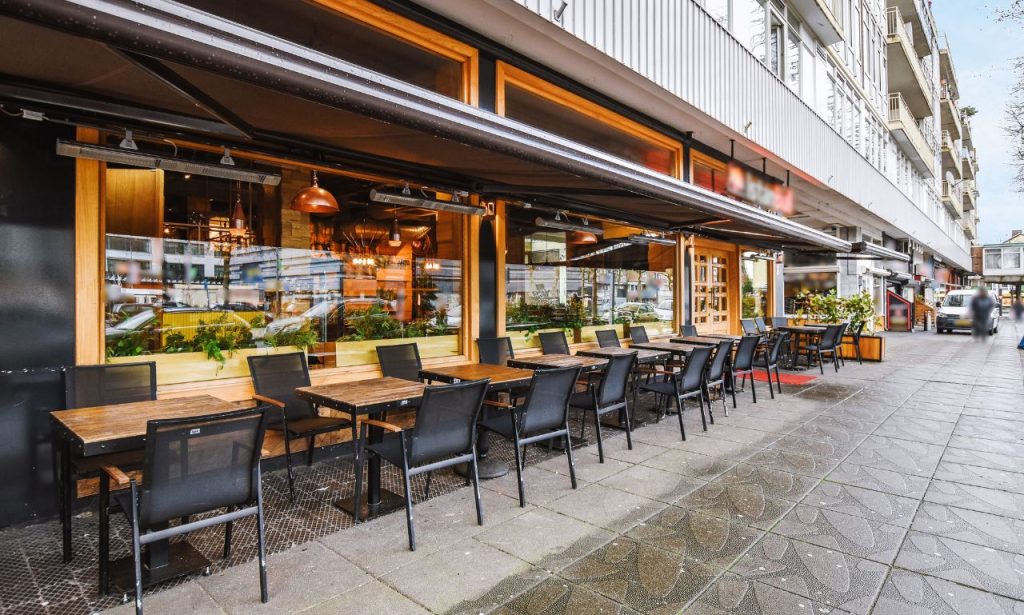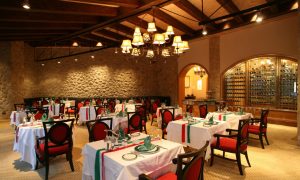Starting a restaurant with no money might seem like an impossible dream. But, with a little creativity and strategic thinking, you can turn that dream into a successful reality. Let’s dive right into how you can do this without breaking the bank!
Explore Innovative Funding Options
One of the most critical aspects of starting a restaurant with no money is figuring out how to fund your venture. Fortunately, there are several creative funding options available to you:
Personal Savings and Small Loans
- Even if you have minimal savings, consider combining what you have with small loans. Look into credit unions and unsecured lending programs.
- Don’t forget to approach family and friends who believe in your vision.
Crowdfunding
Crowdfunding is a great way to raise funds without the stress of traditional loans:
- Platforms like Kickstarter and GoFundMe can help gather initial capital from people who are excited about your restaurant idea.
- Share a compelling story—people love to support a passion project!
Microloans and Non-Bank Lender Loans
- Alternative lending programs such as Kiva offer microloans, which can be helpful to cover initial costs.
- Non-bank lenders often have more relaxed approval processes compared to traditional banks, making it easier for restaurant startups.

Establish a Virtual Restaurant
Virtual Restaurants vs. Brick-and-Mortar Locations
A virtual restaurant, also known as a “cloud kitchen” or “ghost kitchen,” is a restaurant that operates without a physical dining area. Instead, it focuses solely on online orders and deliveries. This concept reduces operating costs significantly.
- No need to worry about the high overhead costs of renting a full commercial space.
- You can leverage online food delivery platforms to reach a broader target audience with minimal initial costs.
Setting Up a Cloud Kitchen
- Use shared commercial kitchen spaces to keep your kitchen equipment and labor costs low.
- Market your virtual restaurant using social media and email marketing to generate buzz about your new offerings.
Launch a Pop-Up Restaurant
Benefits of Pop-Up Restaurants
A pop-up restaurant allows you to test your menu items and brand identity without the commitment of a full-time lease.
- It’s an excellent way to build brand awareness and create an experience for customers without hefty upfront costs.
- You can use temporary spaces such as markets, food festivals, or community events to reach potential customers.
Setting Up a Successful Pop-Up
- Find temporary spaces through local partnerships, community events, or even vacant commercial locations willing to collaborate.
- A limited menu ensures quality and reduces food costs and operational complexity.
Consider Using Food Trucks for Lower Costs
Food Truck vs. Traditional Restaurant
Food trucks have become a popular alternative to starting a traditional restaurant. They offer a more affordable way to serve great food to a broader range of people.
- Lower startup costs compared to a brick-and-mortar restaurant.
- Freedom to experiment with different types of food and locations to find the best target customer base.
Tips for Starting a Food Truck Business
- Utilize second-hand kitchen equipment to minimize acquisition costs.
- Pick a strategic location, such as near local businesses, popular parks, or other high-traffic areas.
- Don’t forget the permits! Make sure you obtain the required business licenses and food service licenses.
Seek Support from Restaurant Incubators
What Are Restaurant Incubators?
Restaurant incubators provide a range of services for emerging food businesses, including affordable kitchen space, mentoring, and marketing support. They can offer financial projections to help you better understand your startup costs.
How to Find the Right Incubator
- Connect with local food incubators to access shared kitchen facilities.
- Look for incubators with networking opportunities, which can help you find potential investors or partners.
Approach Private Investors or Angel Investors
Finding Potential Investors
Angel investors can provide the capital you need to get your dream restaurant off the ground. However, you’ll need to make your pitch convincing.
- Develop a comprehensive business plan that includes your restaurant concept, financial projections, and expected costs.
- Attend networking events or join restaurant associations to connect with potential investors.
Tips for Pitching Your Business
- Highlight what makes your concept unique. Investors love new and exciting restaurant ideas.
- Make sure your business plan is solid, emphasizing cost-effective operational strategies, your target market, and your growth potential.
Look Into Grants for New Businesses
Grants for Restaurant Startups
Some grants are available specifically for small businesses and startups. These can provide much-needed funding without requiring repayment.
- Check government websites for available grants for the food industry.
- There may also be grants available through local community organizations, particularly for minority or female business owners.
How to Apply for Grants
- Create a compelling application by focusing on the impact of your restaurant on the local community.
- Make sure you have detailed financial statements and a clear vision for how you will use the funds.
Research Non-Bank Lender Loans
The Benefit of Non-Bank Loans

Non-bank lenders can be a valuable resource if you don’t qualify for traditional loans.
- They often have more relaxed credit history requirements, which is beneficial for those with bad credit.
- Consider using these loans to cover smaller expenses, such as labor costs or kitchen equipment.
Finding the Right Non-Bank Lender
- Look into local lending institutions and credit unions that offer alternative loans.
- Toast Capital Loan is a popular choice among restaurant owners for its fast approval rates.
Explore Crowdfunding Platforms
Why Crowdfunding Works
Crowdfunding allows you to raise funds by pre-selling menu items or offering special experiences for people who support your dream restaurant.
- Choose platforms like Indiegogo, Kickstarter, or GoFundMe to get your idea in front of a supportive audience.
- Craft an emotional story behind your restaurant—tell people why this is your North Star and why they should support you.
Successful Crowdfunding Campaign Tips
- Offer unique perks, like free meals for supporters once you’re up and running.
- Use engaging videos to tell your story and build excitement.
Develop a Solid Business Plan
Why a Business Plan Matters
A solid business plan is the foundation of your restaurant’s success. It’s essential for attracting investors, gaining loans, and ensuring you have a clear vision for your restaurant startup.
Key Components of a Restaurant Business Plan
- Executive Summary: Describe your restaurant concept and your goals.
- Restaurant Type: Are you creating a casual dining restaurant, pop-up, food truck, or virtual restaurant?
- Target Audience: Define your target customer—know who you are cooking for.
- Financial Projections: Detail your startup costs, expected revenue, and repayment schedules.
Choose a Strategic Location
Importance of Location
The choice of location will significantly impact the success of your restaurant. A strategic location will draw in your target customers and minimize your overhead costs.
- Look for areas with high foot traffic, such as near office buildings or universities.
- Consider temporary spaces or food markets for pop-up restaurants or food trucks to test the waters before committing to a brick-and-mortar location.
How to Choose the Right Space
- If starting a full-service restaurant is out of budget, look into community kitchen options that allow you to rent commercial kitchen space.
- Ensure the location aligns with your restaurant concept and brand identity.
Network with Local Restaurant Associations
Why Networking Matters
Networking can lead to valuable partnerships, funding opportunities, and insights into the restaurant industry.
- Join local restaurant associations and food business groups to connect with other restaurant owners.
- Attend networking events and meetups in your area—these can be great places to get advice and make connections.
Implement Cost-Effective Operational Strategies
Reducing Overhead Costs
To keep your restaurant profitable, you need to minimize both startup and operational costs wherever possible.
- Hire part-time restaurant staff initially, only increasing labor costs as your customer base grows.
- Use a shared kitchen space or find a community kitchen to reduce the expense of renting a full commercial space.
Cost-Effective Strategies for Daily Operations
- Opt for a limited menu initially to keep food costs and operational complexity in check.
- Plan your menu items strategically to minimize food waste and leverage bulk purchasing of ingredients.
Shared kitchens offer an affordable alternative to having your own commercial kitchen space.
- You save on upfront costs related to kitchen equipment, permits, and utilities.
- Most shared kitchens are fully licensed, reducing the burden of obtaining separate food service licenses.
- Look for kitchens that offer flexible rental terms to suit your restaurant’s hours of operation.
- Consider joining a community kitchen that provides networking opportunities with other food business owners.
Consider Catering Services as an Entry Point
Catering vs. Full Restaurant
Catering services can be a secondary option to help establish your brand and generate income without the full commitment of a restaurant.
- Catering can allow you to focus on smaller events while building a reputation and customer base.
- It requires less initial capital, making it easier to start even with limited funds.
Getting Started in Catering
- Start with a home-based catering business if your local laws allow it.
- Collaborate with event planners and local businesses for more opportunities.
Leverage Social Media for Marketing with Little Budget
Power of Social Media
Social media is a powerful marketing tool for restaurants. It allows you to promote your food business with minimal costs.
- Platforms like Instagram, TikTok, and Facebook are perfect for showcasing your menu, restaurant branding, and connecting with potential customers.
- Utilize hashtags like #Foodie, #PopUpRestaurant, and #FoodTruck to increase visibility.
Tips for Effective Social Media Marketing
- Post photos and videos that show off your dishes, kitchen, and restaurant staff’s energy.
- Run giveaways and engage your audience through comments and DMs.
Build a Strong Brand Identity
Defining Your Restaurant Brand
Your brand is more than just a logo—it’s your restaurant’s personality and how customers perceive you.
- Make sure your brand identity is consistent across all platforms, from your logo to your menu design and social media.
- Focus on providing excellent customer service and delivering a memorable experience for people visiting your restaurant.
Elements of Strong Branding
- Create a unique name and visual identity that speaks to your target customer.
- Develop a strong marketing strategy that helps you stand out from competitors.
Focus on Quality and Niche Offerings
Finding Your Niche
Niche offerings allow you to stand out in a competitive market. Instead of trying to please everyone, focus on a specialty that sets you apart.
- Research your competitors to identify gaps in the market.
- Cater to specific dietary preferences, such as vegan, gluten-free, or farm-to-table dishes, to attract a dedicated customer base.
Emphasizing Quality Over Quantity
- Create an effective menu that includes fewer, high-quality dishes rather than an expansive menu that might lead to food waste.
- Prioritize quality ingredients and focus on excellent preparation to leave a lasting impression on first-time customers.
Plan for Sustainable Food Sourcing

Importance of Sustainability
Sourcing your ingredients sustainably can help attract eco-conscious customers and reduce your environmental impact.
- Partner with local farms for fresh, seasonal produce, which also helps support the community.
- Consider implementing composting programs for food waste management.
Cost-Effective Sustainable Sourcing Tips
- Buy in bulk where possible to minimize food costs.
- Develop strong relationships with local suppliers to get the best deals on fresh produce and other ingredients.
Develop Strong Relationships with Suppliers
Partnering for Success
Your suppliers are crucial to your restaurant’s success. Build strong partnerships to ensure timely deliveries, better pricing, and a consistent supply of quality ingredients.
- Negotiation is key—work with your suppliers to get bulk discounts or better payment terms.
- Choose suppliers that align with your values, such as those who support sustainability and fair trade.
Monitor Financial Management Closely
Stay on Top of Your Finances
To ensure your restaurant becomes and stays profitable, you need careful planning and financial management.
- Monitor both upfront costs and recurring expenses to ensure you’re not overspending.
- Set clear financial goals and adjust your strategy as needed.
Tools for Effective Financial Monitoring
- Use accounting software to keep track of your expenses and sales.
- Regularly analyze your financial statements to identify areas for improvement.
Create an Effective Menu to Reduce Waste
Menu Planning Tips
A well-planned menu helps reduce waste and keeps food costs under control.
- Use similar ingredients across different dishes to make better use of your inventory.
- Pay attention to customer feedback and adjust menu items accordingly.
Balancing Variety with Costs
- Offering a limited menu at first can help you maintain quality and keep operational costs low.
- Over time, use customer feedback to determine which dishes to expand or remove from your menu.
Utilize Technology for Efficiency and Cost Savings
Tech Tools for Restaurants
Technology can help streamline operations and save money. Leveraging digital tools can improve efficiency while keeping operating costs down.
- Online POS systems can simplify order management, customer payments, and financial reporting.
- Restaurant management apps can help manage labor costs, stock inventory, and track sales.
Examples of Cost-Saving Technologies
- Use scheduling software to manage restaurant staff shifts effectively and prevent overstaffing.
- Implement online ordering platforms to tap into the delivery and takeout market without building a full-service restaurant.
Analyze Competitors for Strategic Insights
Why Competitor Analysis Is Important
Understanding what your competitors are doing can help you refine your own restaurant strategy and find opportunities for growth.
- Look at competitor menus, pricing strategies, and marketing tactics to identify what works.
- Analyze the customer feedback your competitors receive to understand what potential customers expect from restaurants like yours.
Using Competitor Insights to Improve
- Identify gaps in their offerings and adjust your restaurant menu or service to meet those needs.
- Learn from their marketing strategy and find ways to improve upon it.
Adapt to Market Trends and Customer Feedback
Staying Relevant in a Competitive Market
The restaurant industry is always evolving, and staying on top of trends is essential to stay competitive.
- Monitor food trends, such as plant-based eating, and consider incorporating them into your offerings.
- Keep an eye on customer preferences to ensure you meet their expectations.
Encouraging Customer Feedback
- Encourage customers to leave reviews online or fill out a short survey after dining.
- Use customer feedback to improve the experience for people and keep your restaurant profitable.
Prepare for Challenges and Have Contingency Plans
Being Ready for Unexpected Situations
Unexpected challenges are part of the restaurant business, but having contingency plans can help you manage these hurdles more effectively.
- Have backup suppliers ready in case your main supplier cannot meet demand.
- Create a financial contingency plan to cover unexpected expenses.
Common Challenges for New Restaurants

- Staffing issues: Hire reliable restaurant workers and ensure good training and communication.
- Financial setbacks: Always have an emergency fund to keep operations going during slow periods.
Conclusion
Starting a restaurant with no money is a demanding process, but with the right planning, a pinch of creativity, and persistence, you can absolutely make it happen. Always stay adaptable, keep learning, and build strong relationships within the food community. Don’t let the challenges deter you—they are part of the journey!
Ready to turn your restaurant idea into reality? Start small, dream big, and get cooking today!
ALSO READ:
FAQs
Yes, you can. You can partner with a skilled chef or hire experienced staff to help you out. Many successful restaurant owners started without formal culinary training.
The licenses vary by location, but common ones include a food service license, business license, and possibly a liquor license if you plan to serve alcohol.
Start by considering your niche and the needs of your target audience. Use quality ingredients and keep the menu concise to reduce waste and costs.
Yes, pop-up restaurants can be profitable, especially since they have low upfront costs and are great for building a brand following before launching a full-scale restaurant.




